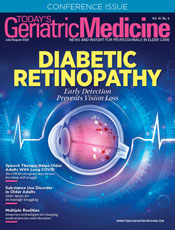
July/August 2023
Fall Prevention: Falls and Dementia New research sheds light on fall risk and dementia. Falls are one of the biggest everyday risks that older adults face. In fact, according to the CDC, falls caused 36,000 deaths among adults aged 65 or older in 2020, making it the leading cause of injury death for that group. Falls also lead to decreased independence for many older adults. There is no question that falls are a serious risk for all older adults, but new research from Drexel University and Johns Hopkins demonstrates that those with dementia have a higher risk of falling than do those without it. This underscores the importance of making patients, caregivers, and providers aware of their increased risk—and what they might be able to do to mitigate it. Falls and Dementia: Two Serious Concerns This most recent research on dementia and fall risk was published in Alzheimer’s & Dementia: The Journal of the Alzheimer Association. It examined a list of potential fall risk factors, including health, function, and environmental factors. Safiyyah Okoye, PhD, an assistant professor at Drexel University, co-led the research with Jennifer L. Wolff, PhD, from Johns Hopkins Bloomberg School of Public Health. Okoye says they looked at older adults both with and without dementia to determine how that cognitive impairment affected fall risk. The study determined that patients with dementia were at a particularly high risk of falling as compared to older adults without dementia. This came from examining data from the 2015 and 2016 National Health and Aging Trends Study, a population-based survey of health and disability trends and trajectories of adults aged 65 and older in the United States. This data showed that nearly one-half (45.5%) of older adults with dementia had experienced one or more falls in 2016, as compared with less than one-third (30.9%) of older adults without dementia. “We found that among older adults with dementia, vision impairment and living with a spouse vs living alone were associated with increased risk of falls,” Okoye says. “A history of a previous fall was also a significant risk factor.” An Evolving Understanding of the Problem The fact that older adults with dementia who lived with a spouse (or a nonspousal other) had a greater risk of falling compared with those who lived alone was a particularly unexpected finding as many would assume it to be the other way around. According to Okoye, it highlights that caregiver support and education are likely understudied components of fall prevention programs. It also demonstrates that caregivers are likely in need of more support. “Care partners of someone living with dementia are heroes and a crucial part of our care infrastructure,” Okoye says. “But we also know that many don’t have all the support they need and perhaps that lack of support contributes to falls.” Understanding what commonly leads to falls can help to tailor approaches. “Our research demonstrates the importance of developing a better understanding of fall-risk and the factors that may contribute to it,” Okoye continues. “Our findings also support efforts to try to prevent older adults with dementia from falling. There has been an idea that it is just too hard to prevent falls in this group, but our results indicate specific areas—vision and living arrangements—that should be considered for inclusion in screening and prevention programs.” The Role of the Primary Provider “Primary care providers are in a great position to do yearly fall risk screenings with their older adult patients,” Okoye says. “Follow-up questions may also start important conversations about areas where additional support may be needed. These might include questions like: ‘Are you worried about falls?’ Or, ‘What are you doing to help prevent falls in your home?’” “Our findings suggest that vision impairment is an important risk factor for older adults with dementia, so primary care providers could make sure their patients are getting regular vision screenings and following up with their vision care providers,” Okoye adds. While primary care providers are an important piece of the puzzle, Okoye acknowledges it’s a complex issue. “Falls, like other important gerontology health topics, are influenced by what is going on at home, the types of activities that people do, the environments they move in, their physical function abilities and limitations, and also medical factors,” she continues. “In order to successfully decrease preventable falls, our interventions will have to extend beyond the clinic. We need everyone, especially physicians, to get creative about how we can change our models of care to address the needs of our growing population of older adults.” Previous research has also shown that integrating fall prevention into primary practice can be complicated. There isn’t a lot of research that demonstrates how well it’s been adopted at the primary care level. Therefore, policymakers and educators might also play a higher-level role in ensuring the messaging makes its way into primary care. The Great Need for Further Research and Understanding “Fall screenings specific for older adults with dementia should be investigated,” she says. “So should multicomponent fall prevention programs for this group such as those that include vision care, caregiver support, exercise, and home environment assessments.” There’s also a great need for even more fall prevention programming. “Falls are an issue of huge importance to older adults and their families,” Okoye says. “We hope this study adds to existing momentum among families, health care providers, researchers, and policy makers to develop effective fall prevention programs for older adults with dementia.” — Lindsey Getz is an award-winning freelance writer in Royersford, Pennsylvania. |
